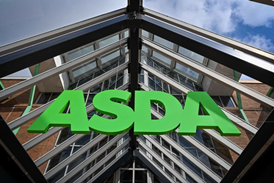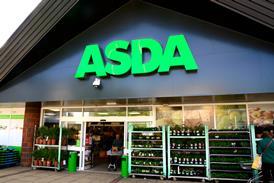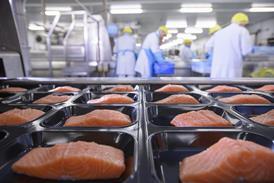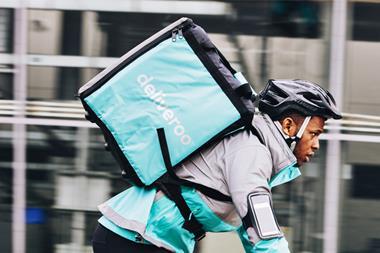No other sector in the drinks business is growing as fast and, despite the massive hike in duty on the category which came into force on April 28, sales have shown no sign of slowing.
What is becoming obvious is that consumers either have not noticed, or do not mind, paying more for PPSs so, if they remain untroubled, nobody loses. The Chancellor has a nice little earner and the suppliers, wholesalers and retailers all pass on the increase, everyone keeps their margins and all stay happy.
Of course, nothing is quite that simple. Who is to say the Chancellor will not recognise a good thing when he sees it and milk the sector for all its worth in subsequent budgets? That prospect will worry the manufacturers and will fuel their lobbying efforts to the Treasury in the coming months.
The tax change also subtly shifts the dynamics in the market. At the top end, brands such as Bacardi Breezer and Smirnoff Ice trade off the kudos of the parent spirit, while at the bottom there are opportunities for suppliers to cut their alcoholic strengths or find an alternative alcohol base to spirits, thereby getting round the tax increase.
There are already malt-based PPSs in the US and these could offer a low cost alternative.
WKD producer Beverage Brands is one of the best placed to consider the malt-based malternative' option because it makes such products for the US and European markets.
Marketing manager Karen Salters says: "We know from our experience that there is little difference between these and the spirit-based drinks but we are still trying to get to the bottom of Customs and Excise thinking. They have not made it clear what will happen if we use malternatives' and they might say that if something resembles a spirit it will incur the same duty and we do not want to jeopardise our position."
For the moment most suppliers are sitting on the fence and monitoring the market performance much along the lines of if it ain't broke don't fix it'.
Bacardi-Martini was quick to react by reducing the strength of its Breezer range from 5.4% to 5.1% which will probably improve retailer margins more than anything else.
Beverage Brands is considering reducing the bottle size of WKD from 330ml to the industry standard of 275ml which will have much the same effect.
Diageo GB reports that rather than the dip in sales some analysts expected when the duty increase began to be felt, there were big rises in volumes. The Jubilee celebrations and the World Cup have helped to generate this but the spirits giant is confident the growth will continue to be dynamic.
The view is echoed by Des Johnson, brand director of Coors Brewing, who says: "I think the sector is similar to cigarettes in that the price is relatively elastic. Young consumers are buying into PPSs because they positively prefer them, not because they are cheaper. The tax increase has caused a significant ripple in the industry it is a tax on innovation and penalises the consumers who are buying into this new area of the market. But it will not damage the long term future of the category. We have passed the added duty on our Reef brand to retailers and they are passing it on to consumers with very little impact on buying behaviour."
With volume growth still steaming along, the PPS category looks set to be the jewel in the drinks crown for some time to come. The latest figures for the run-up to the World Cup show the category 70% up in volume on the same period last year. And there appears to be no end in sight to the fast churn of products coming into and going out of the market offering new flavours and styles.
The category is being fuelled by continual innovation and the buyers are still being bombarded by new flavours and concepts which they struggle to find space for on their shelves.
Two of the latest are Diageo's Gordon's Edge, based on its brand leading gin, and Interbrew's Boru Black, whose parent brand is the new Irish vodka Boru.
The net effect is that brands which have won those all important listings fight hard to keep them with hefty promotional and advertising budgets knowing there are products stacking up behind them just waiting to pounce at the first sign of weakness.
Bacardi-Martini's category development manager Johnny Dennys says his company's focus is strictly on the premium end of the market.
"Our research shows that to maintain consumers' perceptions of the premium ideal it is vital the products stay above 5% abv. If we were to go below that we would not be competing at the premium end.
"But we also need to find ways to reduce the impact of the 61% duty hike.
"Breezer will stay with the Bacardi spirit base but there may be changes on other brands and this will create significant polarisation in the sector."
He suggests the premium and lower strength styles could end up having widely different target markets.
"The consumers are beginning to perceive the category in different ways and we are going to have to think about meeting their needs to stay one step ahead."
In the short term he, like everyone else in the industry, is watching for any reaction to the price changes. "We will have to see how everything bottoms out," he says.
Whatever happens, Bacardi Breezer will continue to be underpinned by the heavyweight investment with which the company has always supported it and Dennys admits: "The worst thing would be to take the investment out."
The support has driven the brand to the position of market leader but it is being pushed very hard by Diageo GB with Smirnoff Ice and Archers Aqua.
Breezer has a 19% volume share of the category (ACNielsen) and Smirnoff Ice has 17%. Breezer is still growing at 20% in volume in the off-trade (Acnielsen, 12 months to April), but it is underperforming the market which is up 42%. The top six brands are driving the growth in the sector and are demanding more space in retailers' fixtures, but there is continual pressure from new brands.
Dennys says: "It has become a very attractive category to get into but the brand is strong enough to withstand the onslaught at the moment and our aim is to keep up the interest in the brand.
"We are putting a lot of focus on drinking at home and will be encouraging this with promotional activity. The introduction of the mini Breezers (20cl) encourages this and they are the right size for barbecues and picnics and other at home occasions," says Dennys.
His biggest problem is Diageo GB's success in the sector. Not content with driving Smirnoff Ice into second position it put its considerable might behind the launch of Archer's Aqua and after a rocky start when demand outstripped supply it has clawed a 9% share of the sector in less than a year. The latest string to its bow is Gordon's Edge, which is going for a slightly older target market and further additions are expected to the Diageo range before the end of the year.
Marketing director Philip Gladman says: "It is an incredibly competitive category with new entrants, mostly me-toos, coming in every week. However, our analysis shows the top four brands account for 60% of the market in the off-trade. These big, well known brands are what consumers want. Smaller products with only below the line spend are simply tying up retailers' money and space."
To make sure the message stays prominent, the company continues to put serious cash behind its brands. It is planning to spend £35m on Smirnoff Ice this year and a further £20m on Archers Aqua.
"Gordon's Edge was introduced because our research shows that older audiences are open to drinking PPSs, but until now there has been nothing that reflects the more laid back drinking moods of these consumers," says Gladman.
While Diageo is aiming at the high ground, the past 18 months has seen the emergence of the value sector at the other end of the spectrum. Companies such as GBL with its VK brand have done well here and Coors has entered the fray in the on-trade with its Java brand from its Different World Drinks subsidiary. Some of the major multiples have developed their own label variants.
Johnson says: "The 4% products offer a low case price to retailers which is passed on to consumers and these are brands which will be exploring the potential of a malt base to drive case prices even lower. If this happens the segmentation of the market will be shown in sharp relief.
"We are also looking at extra strength PPSs because our research into consumer behaviour shows that drinkers are already adding extra shots of vodka to their PPSs to give them an extra kick.
"It is difficult to see how else the sector could segment. It lacks the provenance and heritage that have given rise to a wide variety of beer styles and, at heart, it is a spirit mixed with fruit flavours and water, and that is about it."
He suggests there is a finite number of flavours and colours that can be tried but there are possibilities for the introduction of liquid technology. These could change the nature of the liquid while the introduction of the self cooling widget premium packaged spirit might not be far away, he says.
"Technology will now be brought to bear as we have done all the easy obvious stuff," he says. The category has already overtaken cider in volume terms and it will be bigger than stout or premium ales in five years.
"The last two years have been phenomenal Smirnoff Ice has done well and Bacardi Breezer has reached its peak but the rate of growth will slow. Continued growth will come from brands such as Reef, Archers Aqua and WKD," says Johnson.
{{FOCUS SPECIALS }}
Close menu
- Home
- Retail & Wholesale
-
Products & Suppliers
- Back to parent navigation item
- Products & Suppliers
-
Product Categories:
- Back to parent navigation item
- Product Categories:
- Alcoholic drinks
- Bakery
- Cereals & breakfast
- Cheese
- Chicken & poultry
- Chocolate
- Confectionery
- Crisps, nuts & snacks
- Dairy
- Fish
- Fresh produce
- Frozen
- Household
- Meat
- Own Label
- Sauces & condiments
- Seasonal
- Soft drinks
- Vaping
- Vegan & plant-based
- World foods
- Suppliers
- People
- Reports & Data
-
Topics A-Z
- Back to parent navigation item
- Topics A-Z
-
Popular topics:
- Back to parent navigation item
- Popular topics:
- Cost of living crisis
- Crime
- Deposit Return Schemes
- Finance
- Government & Regulation
- Health
- Inflation
- Loyalty
- Marketing
- Mergers & Acquisitions
- New Product Development
- Sourcing
- Supply chain
- Sustainability & environment
- Technology
- Ultra Processed Foods
- Vaping
- A-Z all topics
- Content by type:
- Events
- Subscribe now
Sign in to comment on this article
Not logged in before? Register for FREE guest access today.
You will be able to:
- Read more stories
- Receive daily newsletters
- Comment on stories
Advert













No comments yet